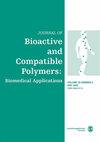Digital light processing-based bioprinting of microtissue hydrogel arrays using dextran-induced aqueous emulsion ink
IF 2.2
4区 生物学
Q3 BIOTECHNOLOGY & APPLIED MICROBIOLOGY
引用次数: 0
Abstract
As a microscale three-dimensional bionic model, a microtissue array is a promising method for disease modeling and drug screening. Digital light processing (DLP) 3D bio-printing technology with the capabilities of excellent printing speed and resolution shows great potential for fabricating microtissue arrays. However, the outcomes of the microtissue arrays using DLP are limited by the shortage of biomaterials. In this work, we prepare hydrogel microtissues by combining DLP printing technology with biphasic bio-ink consisting of gelatin methacrylate (GelMA) and dextran. GelMA/ dextran is mixed to form bio-inks with different volume ratios, which can achieve high-precision printing of various patterns. Due to the presence of dextran, the bio-inks form the internal porous structure of the hydrogel in the printed patterns. The pore size is related to the proportion of dextran in bio-inks, and the pore size of hydrogel becomes smaller with the increase of dextran ratio. In addition, the adipose-derived stem cells (ADSCs) cells encapsulated in the porous hydrogels can maintain a high survival rate of 98.01% after 3 days of culture, and the larger pore size in the hydrogels promotes cell migration. Combining the DLP printing system with the porous hydrogel allows multiple micro-size geometric pattern hydrogels to be printed simultaneously to form microtissue arrays. In this study, a new bio-ink suitable for microtissue arrays is proposed, and a simple, accurate, and high-throughput biological manufacturing method for microtissue arrays is developed, thus providing a valuable tool for drug screening and tissue engineering.使用葡聚糖诱导水性乳液墨水,基于数字光处理技术的微组织水凝胶阵列生物打印技术
作为一种微型三维仿生模型,微组织阵列是一种很有前景的疾病建模和药物筛选方法。数字光处理(DLP)三维生物打印技术具有出色的打印速度和分辨率,在制造微组织阵列方面显示出巨大的潜力。然而,利用 DLP 制作微组织阵列的成果受到生物材料短缺的限制。在这项工作中,我们将 DLP 打印技术与由甲基丙烯酸明胶(Gelatin Methacrylate,GelMA)和葡聚糖组成的双相生物墨水相结合,制备了水凝胶微组织。GelMA/ 右旋糖酐混合形成不同体积比的生物墨水,可实现各种图案的高精度打印。由于葡聚糖的存在,生物墨水在印刷图案中形成了水凝胶的内部多孔结构。孔径大小与生物墨水中葡聚糖的比例有关,葡聚糖比例越大,水凝胶的孔径越小。此外,包裹在多孔水凝胶中的脂肪来源干细胞(ADSCs)细胞经过 3 天的培养后,存活率高达 98.01%,水凝胶中较大的孔径促进了细胞的迁移。将 DLP 打印系统与多孔水凝胶相结合,可以同时打印多个微尺寸几何图案水凝胶,形成微组织阵列。本研究提出了一种适用于微组织阵列的新型生物墨水,并开发了一种简单、准确和高通量的微组织阵列生物制造方法,从而为药物筛选和组织工程提供了一种有价值的工具。
本文章由计算机程序翻译,如有差异,请以英文原文为准。
求助全文
约1分钟内获得全文
求助全文
来源期刊

Journal of Bioactive and Compatible Polymers
工程技术-材料科学:生物材料
CiteScore
3.50
自引率
0.00%
发文量
27
审稿时长
2 months
期刊介绍:
The use and importance of biomedical polymers, especially in pharmacology, is growing rapidly. The Journal of Bioactive and Compatible Polymers is a fully peer-reviewed scholarly journal that provides biomedical polymer scientists and researchers with new information on important advances in this field. Examples of specific areas of interest to the journal include: polymeric drugs and drug design; polymeric functionalization and structures related to biological activity or compatibility; natural polymer modification to achieve specific biological activity or compatibility; enzyme modelling by polymers; membranes for biological use; liposome stabilization and cell modeling. This journal is a member of the Committee on Publication Ethics (COPE).
 求助内容:
求助内容: 应助结果提醒方式:
应助结果提醒方式:


